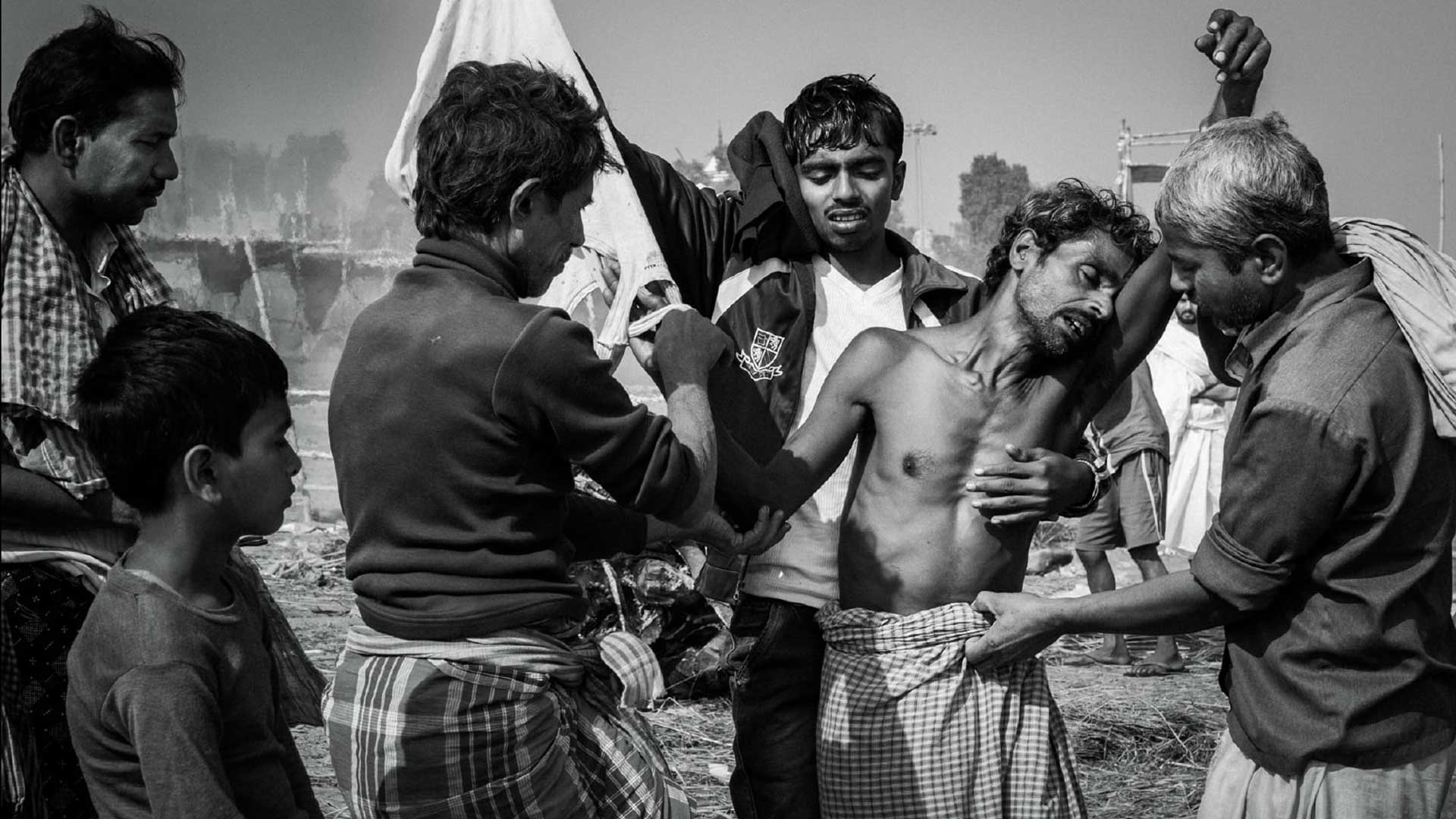Yamal
Yamal Peninsula, Siberia (Russia)
April 2018
Yamal, in the language of the indigenous Nenets who inhabit this land, means "the end of the world"; It is a remote, windswept place, characterized by permafrost, by lakes and rivers and is the land of reindeer breeders for over a thousand years.
Yamal Peninsula is a stretch of peatland that extends from northern Siberia into the Kara Sea, far above the Arctic Circle. To the east lie the shallow waters of the ...
... Gulf of Ob; to the west, the Baydaratskaya Bay, which is ice-covered for most of the year. Nenets herders move with their reindeer in search of food, moving along ancient migratory routes. In summer as in winter, when the temperature often reaches -50 °C.
Today, migration routes are hampered by infrastructure associated with mining - especially gas; roads are difficult to cross for reindeer and pollution endangers the quality of food. "Yamal Megaproject" of the mining companies started in the 1990s and today, 25 years later, millions of cubic meters of gas are channeled into Europe each year.
It is not the first time that the Nenets have to face the risk of extinction, but this time the mining and global warming that causes changes to the vegetation of the tundra are seriously threatening the inhabitants of this territory.
The Nenets eat fish such as white salmon and muksun, a silvery-coloured whitefish and gather mountain cranberry during the summer months. Reindeer meat is also the most important part of the Nenets’ diet. It is eaten raw, frozen or boiled, together with the blood of a freshly slaughtered reindeer, which is rich in vitamins. Every Nenets has a sacred reindeer, which must not be harnessed or slaughtered until it is no longer able to walk.
For the Nenets who are still nomadic, their lands and reindeer herds remain vitally important to their collective identity. Land is everything to them. Everything. The reindeer is their home, their food, their warmth and their transportation. Nenets’ coats are made from reindeer hide, and threaded together with reindeer sinew. Lassoos are crafted from reindeer tendons; tools and sledge parts from bone. The covers of the conical-shaped tents – called choom – are also made from reindeer hide and mounted on heavy poles.
Storytellers, in many Native cultures, carry lessons across generational lines. The women who tell these stories preserve traditional customs and confront contemporary problems. Words of meaning, words of instruction, stories showing where people come from, how they are, what they should be.
When men would go to hunt, women would tell the stories and educate the children about core values to maintain order and to encourage safety from an early age, ensuring that the children knew how to critically analyze dangerous situations and connect with the culture’s spiritual essence. Mothers and grandmothers would pass down religious motifs and origin stories, building pride and understanding in children. This central power to shape and form the minds of the youth gave women an influential voice.
Amazed by this family, who live in perfect harmony with their surroundings in polar conditions. These days spent with them will change me for ever. I hope they will be able to protect themselves from the relentless attacks of consumerism, pollution and discrimination. And Lida, an elderly Nenets woman, keeps telling me that reindeer is their life and their future.
Penisola di Yamal, Siberia (Russia)
Aprile 2018
Yamal, nella lingua degli indigeni Nenets che abitano questa terra, significa “la fine del mondo”; è un luogo remoto, battuto dal vento, caratterizzato dal permafrost, da laghi e fiumi ed è la terra di allevatori di renne da oltre un migliaio d’anni.
I pastori Nenets si muovono con le loro renne alla ricerca del cibo, spostandosi lungo rotte migratorie antichissime. In estate come in inverno, quando la temperatura raggiunge spesso i -50 °C.
Oggi, le rotte migratorie sono ostacolate dalle infrastrutture associate all’attività estrattiva – soprattutto del gas; le strade sono difficili da attraversare per le renne e l’inquinamento mette in pericolo la qualità dell’alimentazione.
“Yamal Megaproject” delle società di estrazione è partito negli anni ’90 ed oggi, a 25 anni di distanza, milioni di metri cubi di gas vengono canalizzati in Europa ogni anno.
Non è la prima volta che i Nenets si trovano a dover fronteggiare il rischio dell’estinzione, ma questa volta l’attività estrattiva ed il riscaldamento globale che provoca modificazioni alla vegetazione della tundra stanno seriamente minacciando gli abitanti di questo territorio.
E Lida, una anziana donna Nenets, continua a ripetermi che le renne sono la loro vita ed il loro futuro.

